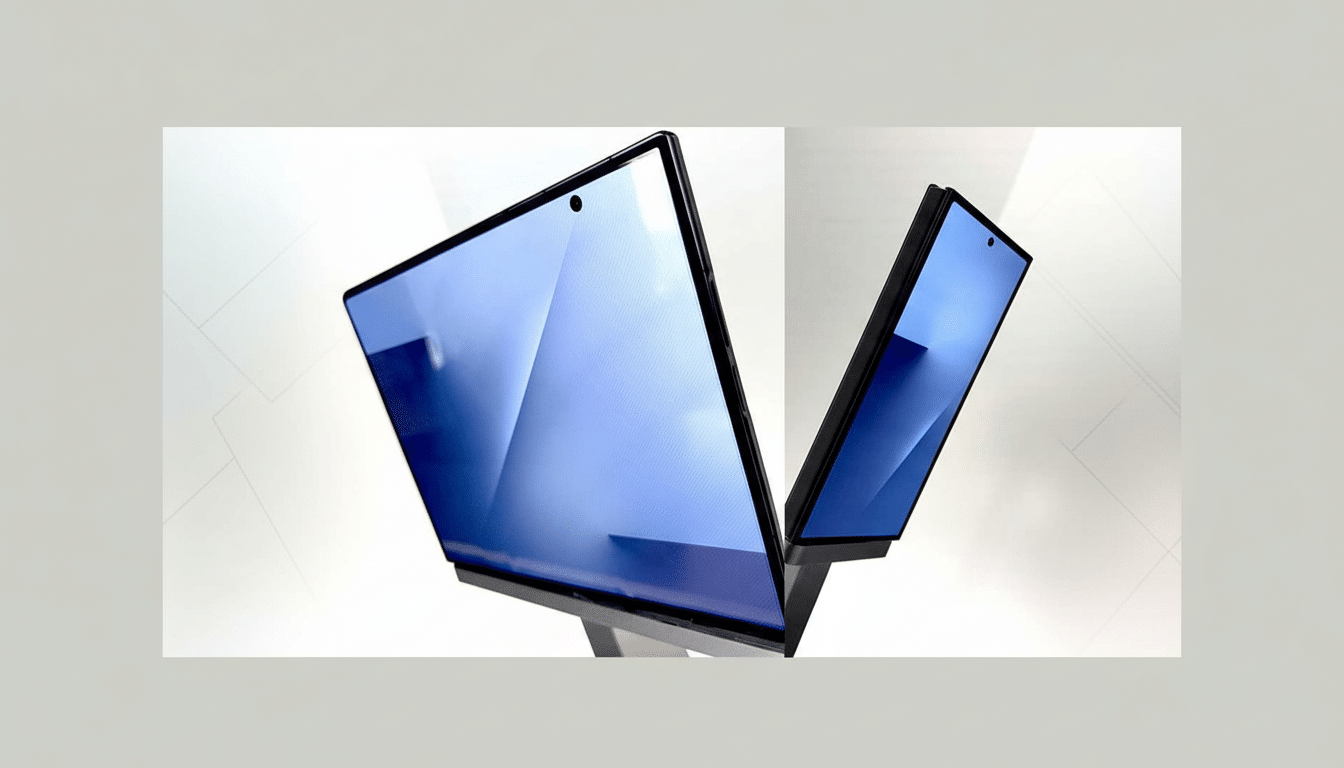Samsung’s long-rumored tri-folding phone is coming into view, and a new leak has given us our best look yet at the Galaxy Z TriFold, which will combine a tablet-quality inner display with high-end hardware — and an unusual design quirk that could help differentiate it from every folding phone out today.
The latest Galaxy Z TriFold leak details key specifications
Leaker Evan Blass says this phone (which is rumored to be called the Galaxy Z TriFold) will actually be released as a commercial product and, unlike most foldables, feature a 6.5-inch cover screen on top of a 10-inch inner one. For context, most book-style foldables typically come in around 7.6 to 8 inches; a 10-inch panel is about 32% larger diagonally and essentially swaps this from phone-plus territory into compact tablet country.

The leak lists a maximum brightness of 2,600 nits for the outer display and 1,600 nits for the interior panel. The former is in line with the headline brightness level you find on Samsung’s latest flagships, so it should be fine for using outdoors even on the smaller panel you’ll be interacting with most often when out and about.
Inside, the TriFold will reportedly be powered by a Snapdragon 8 Elite family chipset. An exact variation of silicon was not mentioned, but the implication would be for Qualcomm’s latest generation — just like with Samsung and its flagship foldables. The core specs are paired with a 5,437mAh rated battery — around 24% larger than the 4,400mAh pack found in Samsung’s current book-style foldable — an understandable jump given the increased screen real estate.
Asymmetry is the design quirk to watch on the TriFold
Arguably the most curious claim is that of an asymmetric panel thickness: 3.9mm below, 4.0mm in the middle and 4.2mm on top across its three sections.
That variance suggests a hinge and layer stack designed for durability, not some impossibly perfect uniformity. It could affect how the device feels while it’s folded, how weight is distributed when you’re holding the phone, and the way accessory makers think about designing cases.
Tri-folds usually have the Z-fold pattern which involves a combination of in-front and out-front folds. Thinness differences can provide stress balance between two hinge axes, reduce local pressure on the ultra-thin glass and enable prevention of creases. In exchange, you get a folded stack that’s not totally flush (visible in your pocket) but good for the lifespan.

Performance and camera expectations for Galaxy Z TriFold
It should be said that a Snapdragon 8 Elite-class chip ought to produce the same quality experience in terms of flagship performance found within the best Android phones, only enacting it on a potentially 10-inch canvas and multi-panel multitasking. Look for aggressive tuning of thermals and sustained performance — that’s particularly important during long productivity sessions or gaming on the bigger screen.
The leak also suggests a 200MP main camera — again, matching sensors from Samsung’s upper echelons. In real-world terms, that generally means aggressive pixel-binning (e.g., down to 12MP photos for superior low-light performance) and lossless-like 2x crops from the high-res core of the sensor. Foldables have traditionally made concessions when it comes to camera modules due to the demand for thinness; a thicker stack of a tri-fold could provide engineers more space with which to work, including possible optical and stabilization hardware without inflating the size of the camera bump.
A 10-inch canvas aimed at tablet-style tasks and workflows
The inner display size points to Samsung targeting actual tablet-like use: side-by-side apps, three-window multitasking and better document editing. Should stylus support materialize — a feature Samsung has leaned into on large-screen devices — then the TriFold could turn into an easily portable sketchpad and note-taking machine that doesn’t require you to pack another tablet.
It’s not uncommon for folding panels to lag behind that of rigid OLEDs in terms of peak brightness difference between cover and internal displays. Still, 1,600 nits is fine for indoor productivity and the bulk of outdoor use, and the 2,600-nit cover will pick up where that leaves off for fast look-ups in direct sun.
Why This Is Important For The Foldable Market
Analysts at outfits like Counterpoint Research and IDC have recognized consistent gains for foldables at the premium end, where larger form factors yield higher average selling prices and better brand stickiness. A believable tri-fold might expand that premium tier while erasing the final line between phone and tablet — and could prod rivals who’ve shown off tri-fold prototypes to pick up their pace.
Samsung has already shown off public tri-fold concepts, which suggests the company views multi-panel devices as an evolution of sorts for mobile computing. If these leaked specs are accurate — and particularly the 10-inch display, large battery and 200MP camera — it could be the first mass-market experiment to see if the three-screen segment is something more than a flashy prototype. Now all eyes are on how Samsung is able to balance weight, durability and price to make that case.

